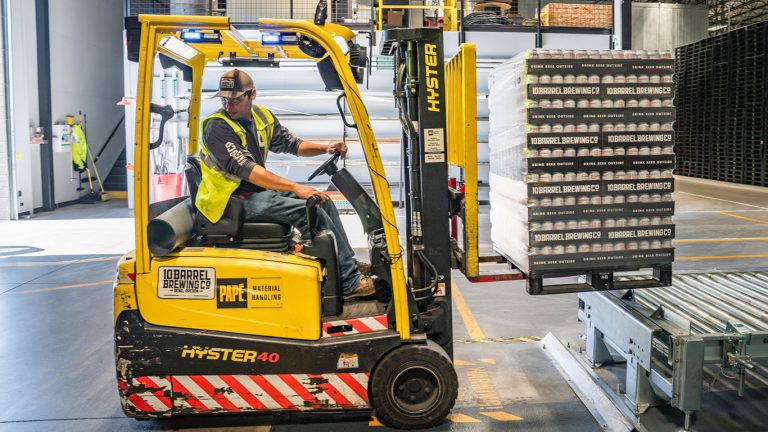Just 40 years ago, countries like Canada, Italy and Brazil had substantially bigger economies than China did. That might seem like a crazy statement today, especially considering that China has been the investing and economic darling of the world over the last several decades. But something happened recently that brought China’s economy to a standstill- the Coronavirus.
The outbreak of this disease has slowed down the manufacturing hub of the world to the point where many other countries are seeing drug, food and retail shortages. And what’s interesting is that this is a problem that is unique to China, because if this outbreak was to occur in any other country, we would not have seen a global impact anywhere on the scale we are seeing today. And here’s why:
During the thick of the industrial revolution in the 1800s, European and North American countries were going through a technological and economic boom. But what most people do not know is that during this time, China had by far the largest and the most powerful economy in the world. In fact, China’s economy was larger than all European and North American companies combined. Now this was for a few key reasons, one of which was that in the previous centuries, China focused on becoming the largest agricultural producer in the world. They began producing an abundance of a wide variety of food while having a near monopoly on the production of salt. This led China’s population to grow from nearly 100 million to over 400 million within one century, and because of this by 1820, 1/3rd of the world lived within China’s borders.
The Chinese empire then began to crumble. As the rest of the world was focusing on new economy, new technologies and globalisation, China was still focused on agriculture, commodities and domestic trade, and this came to a head in the 1840s when new ‘steam-powered’ British ships arrived at the cost of China. This was the start of the Opium war where 20,000 British troops with advanced technology faced off against 100,000 Chinese troops. The war ended up lasting about three years, and this was the beginning of the end of the glorious Chinese empire.
After the war, China was forced to give up key ports and cities around the country to newly advanced western powers of the world. They were also forced to sign unequal treaties with the west which crippeled the Chinese economy and forced them to pay reparations for the war. This was known as the century of humiliation for china-where they went from being the economic powerhouse of the world to an impoverished country that gave up substantial territory to Britain, Russia, Germany and Japan.
Now by 1920, China was seeking some assistance to help the country rebound from it’s humiliation. So it sought out the help of Vladimir Lenin and the Soviet Union and over the next several decades, wars, Soviet influence, several power vacuums and a new leader named Mao Zedong led China towards a new form of economic policy called Communism amd up until 1978 communism remained as the main economic model of China. But the government realised that this was not working. In 1976, the GDP per capita of China was a mere $156 and the overall Chinese economy had a growth rate of 2.9%. This meant that the average person in China was living in extreme poverty and the future didn’t look so bright for the Chinese economy. So the country decided to try a new, or old, system. Something they hadn’t tried in nearly 100 years, since the days of their global domination. That system was capitalism.
China didn’t want to go full capitalism right away. They started off by decollectivising the agricultural sector, then they began opening themselves up slowly to foreign investors and eventually granted a few cities the permission to allow private small businesses. However, In 1980, the vast majority of the Chinese economy was still run by the state. But after seeing the success of what capitalism and privatisation did for them in the first few years of this new economic model, they released the first string on the economy and lifted price control, began deregulating virtually every industry and allowed nearly any citizen to start their own business if they wanted to. By 2005, private industries accounted for nearly 70% of China’s GDP. And today, China has lifted 100s of millions of citizens out of poverty with their new economic model. During all this time however, there was one industry that the Chinese government paid special attention to- manufacturing.
You see, China saw a unique opportunity in the early 1980s where they could begin building up a new technological infrastructure with complete control over regulation, laws and wages. They also saw that they could build a state-planned business ecosystem where it would be much more efficient to do business. So they thought theoretically they could have all of the suppliers, distributors, manufacturers, government agencies, customers, all within the same location. So, that’s what happened. China opened up special economic zones like a small town called Shenzhen. Shenzhen had a population of 50,000 in 1980 before it began attracting investors and turning into the technological hub of the world. Over the next decade, Shenzen’s population grew to over 12 million people and attracted global business because it was substantially cheaper to manufacture products in a place like Shenzhen and ship it overseas, than it was to manufacture it anywhere in the western world. And this trend caught like wildfire. Giant companies like Apple, AT&T,General Electric, Duracell, Nike, and virtually any other name brand company in any sector of the western world began moving their manufacturing over to China. But can you blame them?
This allowed companies to double their profit margin or allowed some companies to reduce the price of their products for their consumers. It soon became a fact that if you were not going to manufacture your product in China, when you’re not going to have prices comparable to your competitors who did move their manufacturing over to China. So, this is how China became the supply chain of the world. Your options were either move you manufacturing over to China and be competitive, or go out of business. By 2010, China overtook the USA in terms of total manufacturing output and as of 2020, China controls 30% of the world’s total manufacturing-meaning that about one-third of the world, is made in China.
Now that you have some background on China and the Chinese economy, you can most likely see the glaring hole in terms of the world putting all its manufacturing eggs in China’s basket. And obviously that is, what if something happened to China? Would 30% of the world just not get their products?
And as we learnt recently, that answer is kind of- Yes.
The Coronavirus outbreak in Wuhan caused virtually an entire shutdown in China’s manufacturing sector for several weeks in order to contain the virus and stop it from spreading through the population. Because of this, countries around the world are facing shortages of, well, pretty much everything. For example, apple has a shortage of replacement iphones. The FDA recently announced an incoming drug and medication shortage. Healthcare facilities have been running out of protective masks. Virtually every clothing company in the western world has massive delays.
So what effect have these shortages had on the global economy. Well, so far, here’s what we know. The coronavirus supply chain slowdown was one of the key factors as to why the stock market has dropped by 22% in the last 3 weeks. Analysts are saying that this was just the normal correction that was going to happen anyways because the stock market has been pretty insane for the past three years or so. So we don’t know for sure if the coronavirus was the last straw for this stock market correction, or if the coronavirus is actually the driving factor because people are predicting a slowdown in economic growth.
Now we’ve also seen a sharp decline in travel throughout the world. In fact, travel has decreased by about on average, 50% globally in the past 2 months. This has forced some flights to fly to their destinations with no one on board except the flight crew. And lastly, this has obviously had a significant impact on China. China was already having its worst economic year in a decade before this outbreak occurred. And now that it’s economic core has been shaken up and forced to temporarily shut down, we might see China having one of its worst economic years, since it was a communist economy.

